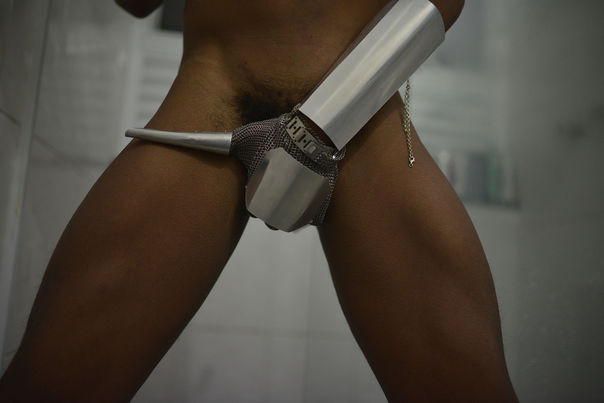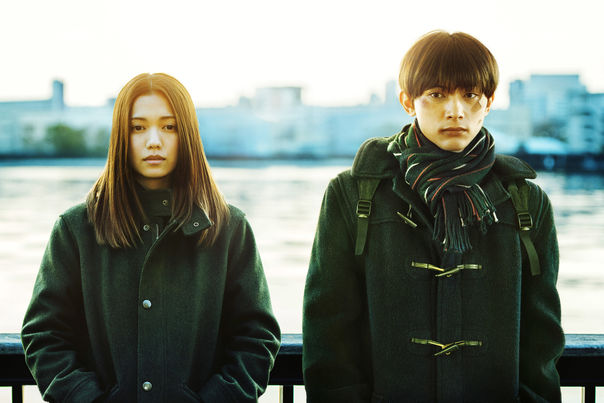On the Politics of Revealing
By Flavia Dima

© Nubia Abe
“My secret is to see competition as inspiration,” said programme manager Florian Weghorn at the Opening Ceremony of this year’s Berlinale Talents. “It’s not just about revealing the secrets of success, but also about keeping the secrets alive.” These are secrets related to the film industry and its innermost workings – be they technical, artistic or market-related. Sharing them in the workshops of Berlinale Talents is attached to a positive notion of secrecy, in which such hidden information is imparted upon others for beneficial uses – in the hope that this year’s 250 Talents will be able to employ them. The reason why such information isn’t readily available is because it is considered a valuable resource. Access is given if one is deemed worthy of receiving it, or in exchange for resources, which is only an option for those in a position of privilege. In a competition-driven industry, one must wonder if sharing secrets between a select few isn’t a way of maintaining an elite-driven status quo.
Beyond the underlying assumption that secrets are either good or bad (and whether this form of classifying them is proper, or even relevant), one must reflect on the politics that lie in the act of revealing them. In some cases there are secrets that must be kept hidden. That’s usually the case of what one may call a “bad secret”. Secrets are objects which can upset power balances and shift monopolies once they break out into the open – see Harvey Weinstein’s downfall. If deciding to guard a secret is a way of maintaining power, it’s by revealing it that strength is achieved. By analysing these propositions and the way they are explored in cinematic language, and how they reflect personal and political history, the consequences of secrets can be better understood. In RIVER’S EDGE (dir. Isao Yukisada), a teen drama adapted from a 1994 manga, protagonist Ichiro Yamada is a severely bullied, closeted teen, who keeps a show-girlfriend, Kanna, as a means of concealing his crush on a senior football player. There’s another secret that Ichiro is hiding: the exact location of a completely rotten corpse, lying in a field next to the school, which he uses as a personal sort of “memento mori”, a place of contemplation. The camera never approaches a subjective angle – the myriads of characters are always seen from the exterior, a device to illustrate their distant personalities. Although, there is always a given sense of intimacy in scenes that deal with Yamada’s hidden obsessions. Time becomes suspended as the rhythm of the editing seems to adjust to the protagonist's inner emotional workings – as he’s relishing the content of his secrets, the audience also takes part in his perversion. However, there are repercussions from both of these secrets spiralling into a web of further complication.
“It’s not like I was keeping [my identity] secret!” quips Linn da Quebrada in a discussion about catcalling and street harassment endured by trans people. She is the star of co-directors Kiko Goifman and Claudia Priscilla’s documentary BIXA TRAVESTY, and Linn, who was deeply involved in the making of the film, reveals her unique approaches to gender and sexuality. She doesn’t feel the need to modify her body with hormones and still calls herself gay. The film is a collection of chronologically disjointed episodes that are gathered portrait-style. We see Quebrada in both public and private capacities: there’s footage of her day-to-day shenanigans at home, combined with concert footage and interviews. Woven in between are shots where she addresses the camera directly: various talking-heads shots frame the protagonist as a heroic, activist figure. The film’s most graphic sequence contains close-up footage of Linn’s genitalia and behind. Although it may disturb some viewers, it is a reveal that conveys a radical sense of transparency and sincerity. Linn also reclaims her body and the image that it projects. Corporeality is a large aspect of Linn da Quebrada’s work, be it through dance or lyrics – she seems to have intimated the knowledge that gender is, as Judith Butler puts it, a performative act. “I am the disturbance,” she boldly proclaims in one of her direct addresses – her body becomes a weapon, a physical support for all the gender studies theory that has been amassed. As such, the sanctions that have been historically imposed on queer people and bodies are overturned: “Sit down and watch your destruction!” she warns across several songs, aiming at the straight, macho male, a warning about the inevitable end of patriarchy. One must wonder if said destruction of machismo isn’t a consequence of non-binary approaches towards orientation and gender performance not being secret anymore – of the fact that it shifted from being perceived as a private matter to an increasingly public, even political concern.

Secrets certainly have a potential to be dangerous once they are revealed – they have political value, especially in countries mired in civil conflict. Their riskiness extends beyond the simple area of personal, physical danger – they can also upset entire systems and institutions. This is one of the many lines of thought explored in Jasmina Metwaly’s WE ARE NOT WORRIED IN THE LEAST, a video installation in Berlinale Forum Expanded. As she investigates aspects related to the mediality of the Egyptian Revolution – from workers documenting the effects of privatisation using cellphone footage, to different modes of state censorship – one of the underlying issues in the videos is a crisis of expression. On one hand, it’s caused by the discomfort that the citizens direct at the governing bodies, expressing outrage through public protest. On the other hand, the ruling factions feel a different kind of discomfort, as their grasp on power is shaken through the spread of sensitive information, so, in turn, they prohibit access to certain documents and facts. Even if state interventions do have an effect – as we see a courtroom recording getting abruptly cut off at the orders of a judge – there’s only so much they can do to suppress the proliferation of videos, given the specifics of modern, online media. The installation’s centrepiece is composed of six TV screens showing online found footage of the protests, juxtaposed with a filmed commentary by Metwaly: an analysis of the testament to how images can be a symbol and tool of political empowerment. This footage becomes central to exploring democracy, shedding the need for highly aestheticized visuals, we see shaky, low-resolution video. Images that are usually seen as throwaway material due to quality issues are recuperated, re-valued in a political context.
Secrets are central to cinema and its inner workings, be they inside or outside of the frame. They structure narratives and narrations, act as determinants in a character’s motivation, and have the power to radically change circumstances and approaches. They are a tool for directors to use to adapt scripts into visual language, as a method of constructing meaning, of employing the concept of “absence”, of conveying emotions and facts that may have a strong impact on the viewer. But beyond the formal function of secrets in cinema – be it of shock, suspense or ellipses – they are a means of showing how power functions within narrative and the world that it represents.

